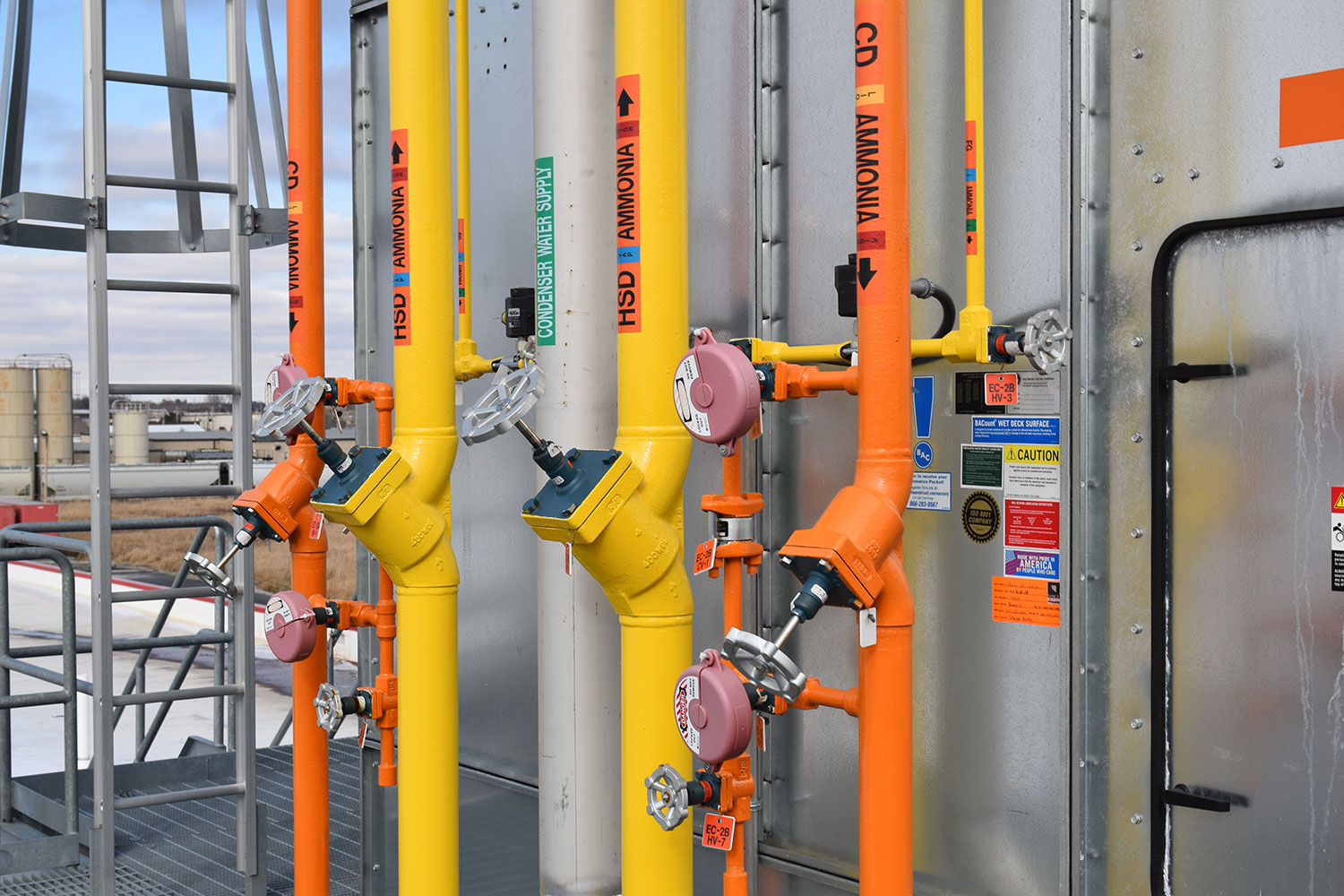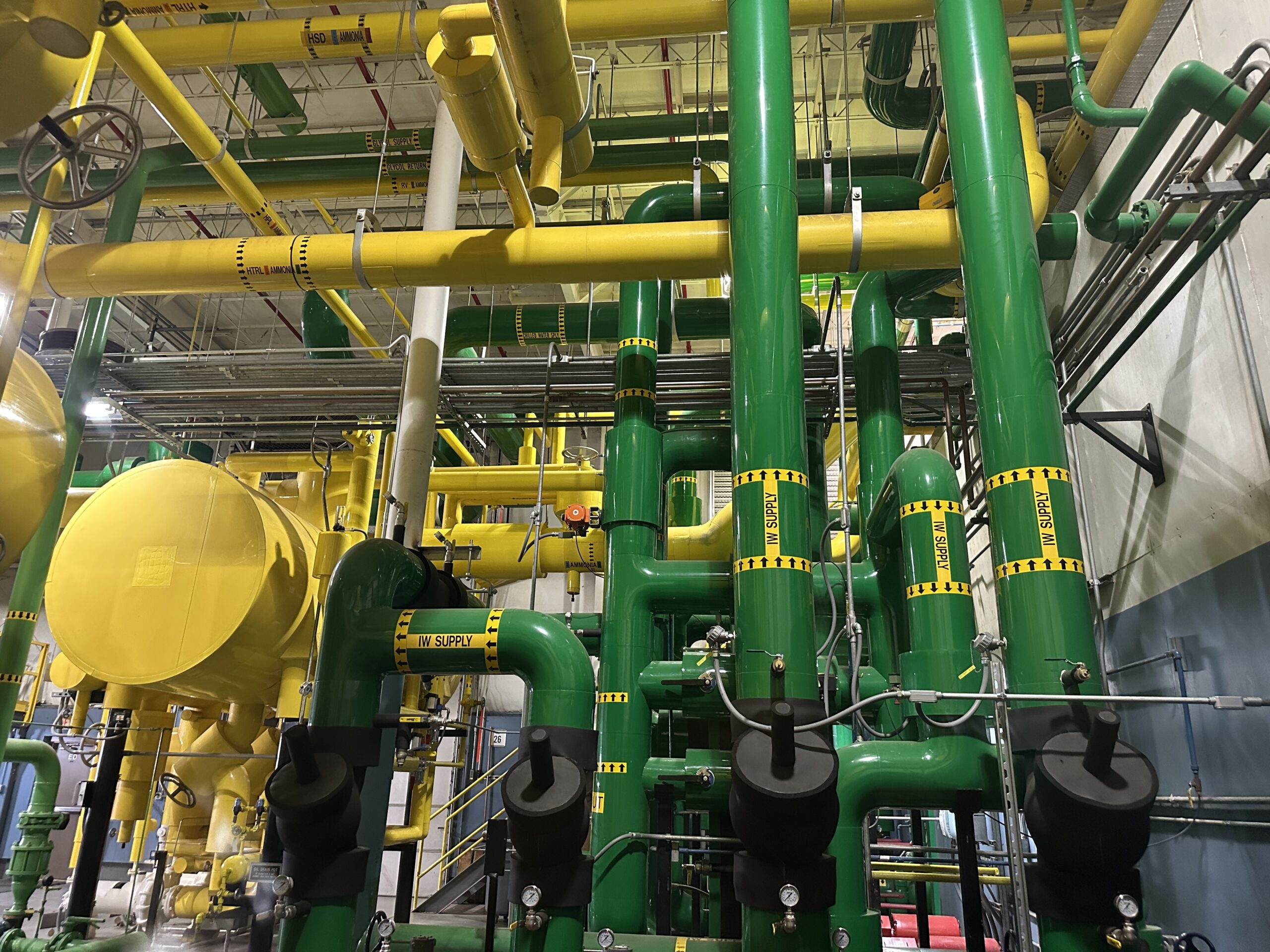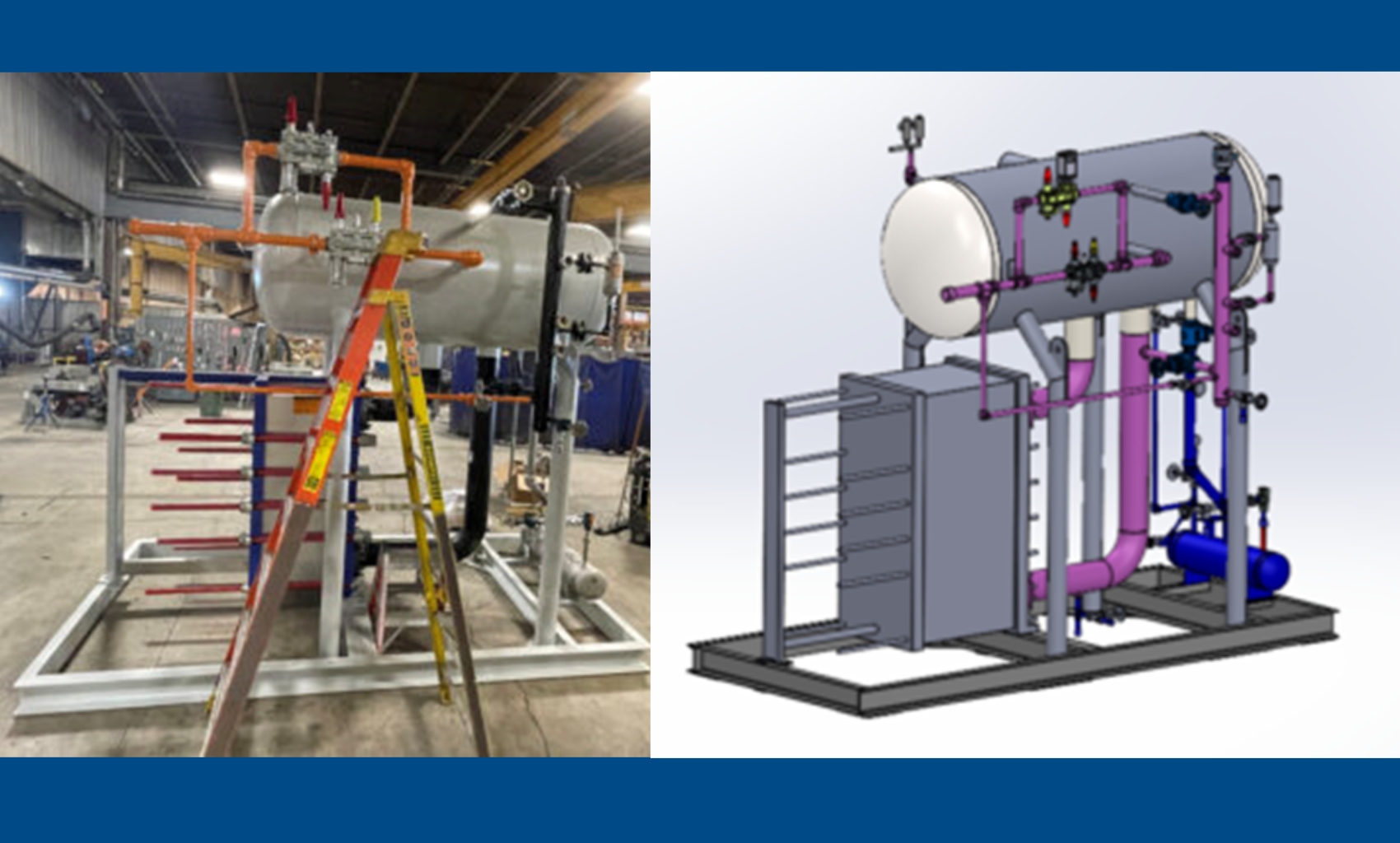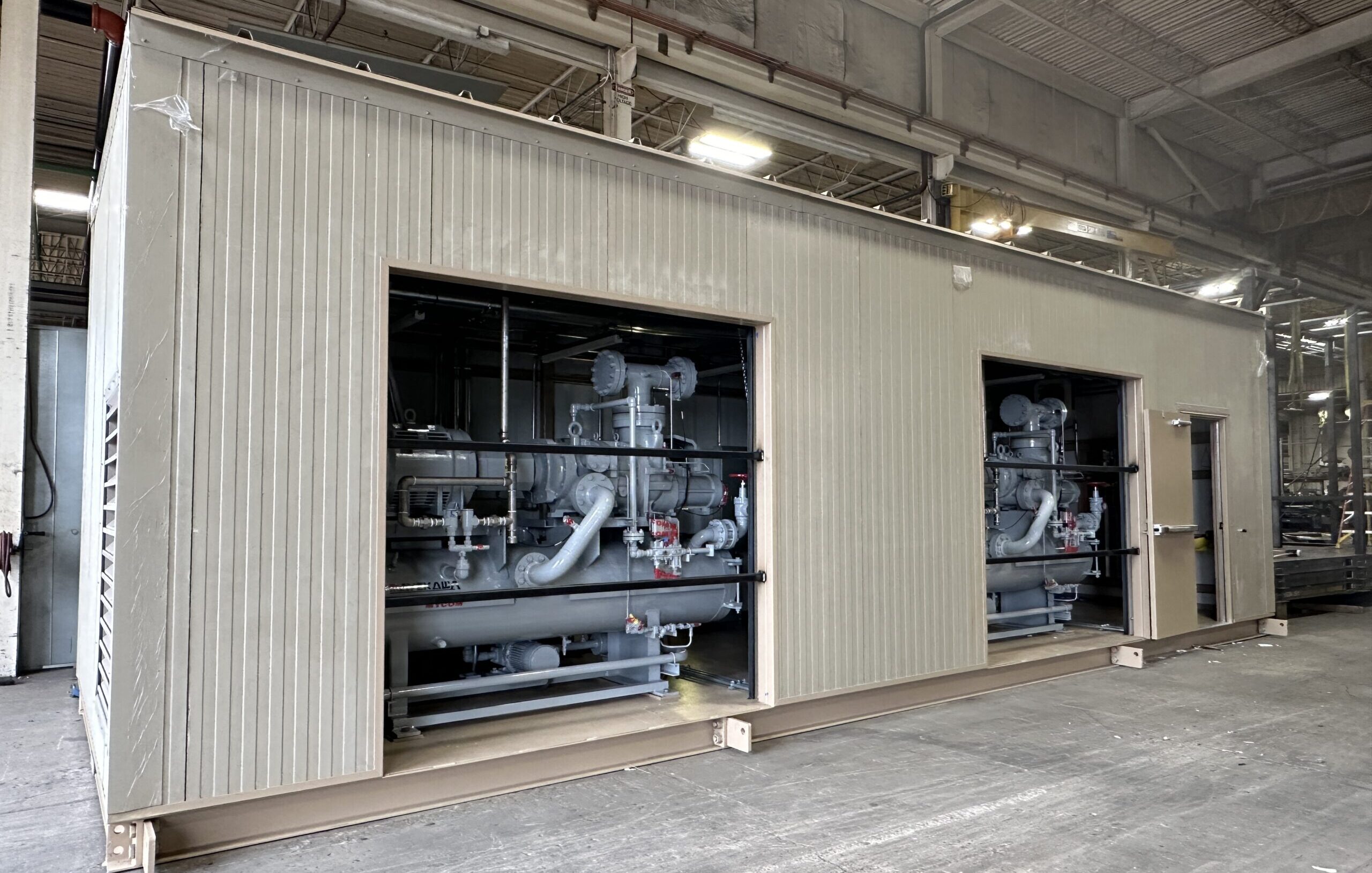Ammonia has been widely used in industrial refrigeration for over a century due to its excellent thermodynamic properties. Ammonia refrigeration systems are commonly found in large cold storage facilities, food processing plants, breweries, and other industries where reliable and efficient cooling is essential.
The Basics of Ammonia as Refrigerant
Ammonia, with the chemical formula NH3, is a colorless gas. It is toxic in higher concentrations and is “self-alarming,” given its pungent smell at lower concentrations.
It has several crucial advantages when it comes to refrigeration. Ammonia is highly energy-efficient and provides excellent heat transfer properties.
It has zero ozone depletion potential (ODP) and low global warming potential (GWP). These attributes make it an environmentally friendly choice compared to many other refrigerants.
The Components of an Ammonia Refrigeration System – and their function
An ammonia refrigeration system consists of several key components, each serving a specific role in the cooling process:
Compressor
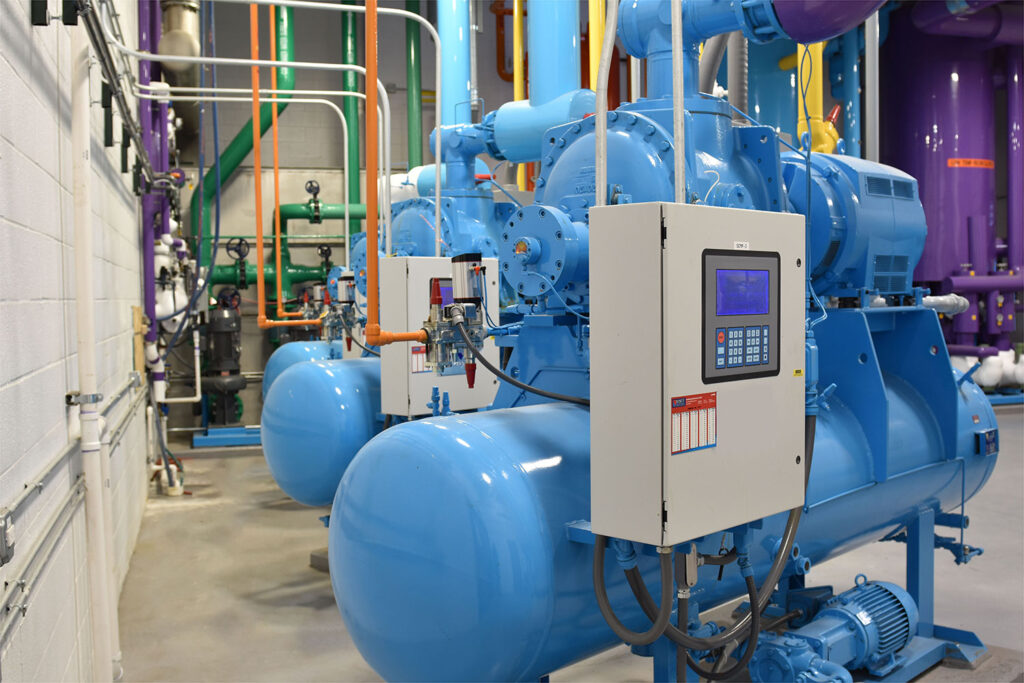
The compressor is the heart of the refrigeration system. Its primary function is to compress low-pressure ammonia into a high-pressure gas, significantly raising its temperature. This high-pressure, high-temperature gas can be the starting point for understanding the refrigeration cycle.
Condenser
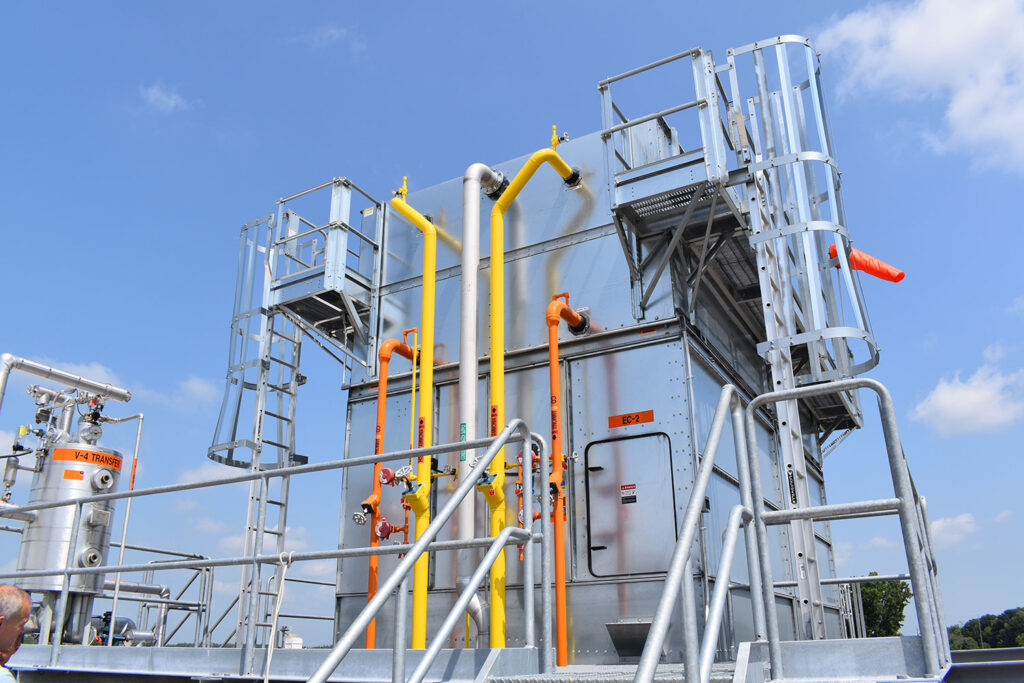
After compression, the hot, high-pressure ammonia gas moves to the condenser. In the condenser, heat exchange, usually evaporatively cooled, releases heat to the surrounding environment. As the gas releases heat and is cooled, it condenses into a high-pressure liquid.
Expansion Valve
The high-pressure liquid ammonia usually passes through an expansion valve, usually hand-operated, suddenly reducing its pressure and temperature. As a result, the ammonia changes from a high-pressure liquid to a low-pressure liquid and a small percentage of flash gas. The creation of flash gas induces a significant drop in temperature in the ammonia, which now enters the evaporator.
Evaporator
The low-pressure liquid enters the evaporator(s), which has been selected and located to efficiently transfer heat from the load source. As the ammonia absorbs heat from the source (such as the air or the produce to be cooled), it evaporates into a low-pressure gas and is returned to the compressor’s suction.
Benefits and Applications of Ammonia
Ammonia refrigeration systems offer several advantages, making them a preferred choice in various industrial applications:
- Energy Efficiency: Ammonia has excellent thermodynamic properties, providing high energy efficiency and reducing operational costs.
- Environmentally Friendly: Unlike many synthetic refrigerants, ammonia has a negligible environmental impact, with zero ozone depletion potential and low global warming potential.
- Cost-Effective: Ammonia is cost-effective compared to other refrigerants, especially in large-scale industrial applications.
- Reliability: Ammonia refrigeration systems are known for their robustness and reliability, ensuring consistent cooling performance.
Learn more about the benefits of ammonia refrigeration.
Ammonia, Your Next Refrigeration Choice
Ammonia refrigeration systems are commonly used in food processing plants for freezing and cooling, cold storage warehouses, and large-scale industrial refrigeration applications. Their energy efficiency, environmental friendliness, and reliability continue to make them a top choice for industries seeking efficient cooling solutions.
Ammonia refrigeration systems play a vital role in industrial cooling applications. The energy efficiency and low operating costs of ammonia refrigeration systems enhance the profitability of their businesses. The systems effectively transfer heat through a vapor-compression refrigeration cycle, ensuring products and materials are stored at desired temperatures. As technology advances, ammonia refrigeration systems will likely continue to evolve, maintaining their position as a cornerstone of the industrial refrigeration sector for years.
Bassett Mechanical, A Leader in Ammonia Refrigeration
With one of the largest mechanical contracting teams of in-house engineers, designers, project managers, and service professionals in Wisconsin and throughout the United States, we have the knowledge and experience to take your industrial refrigeration projects from idea to implementation and beyond.

